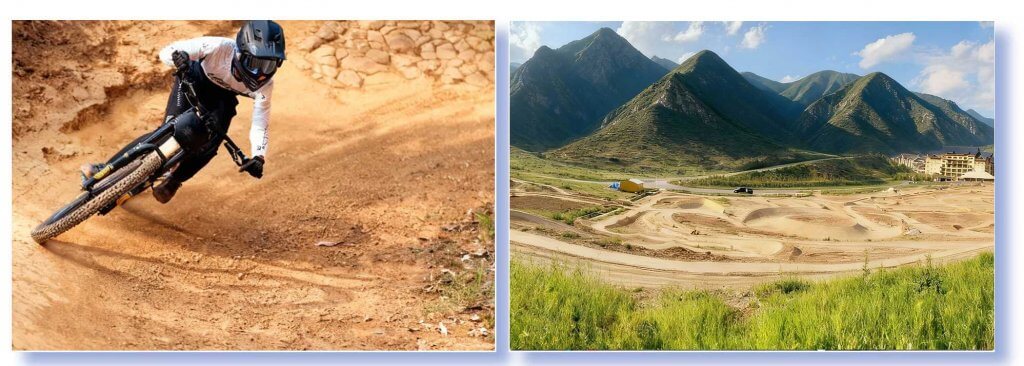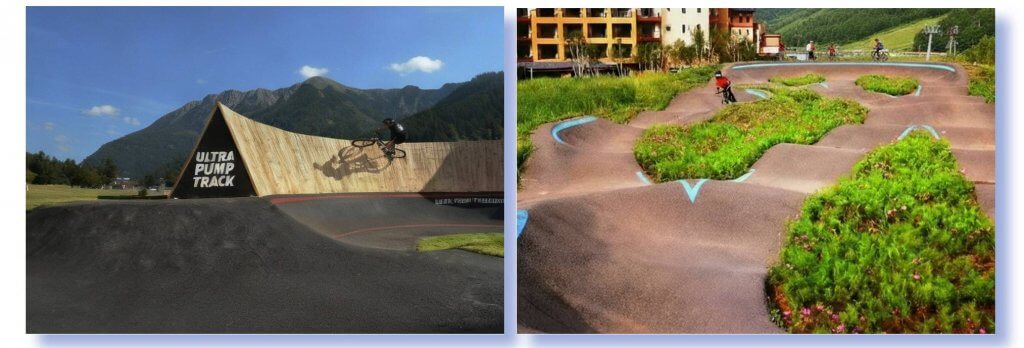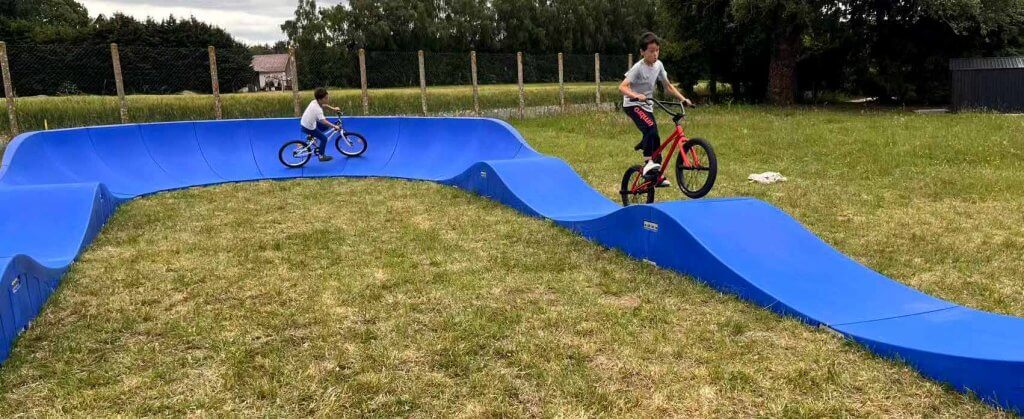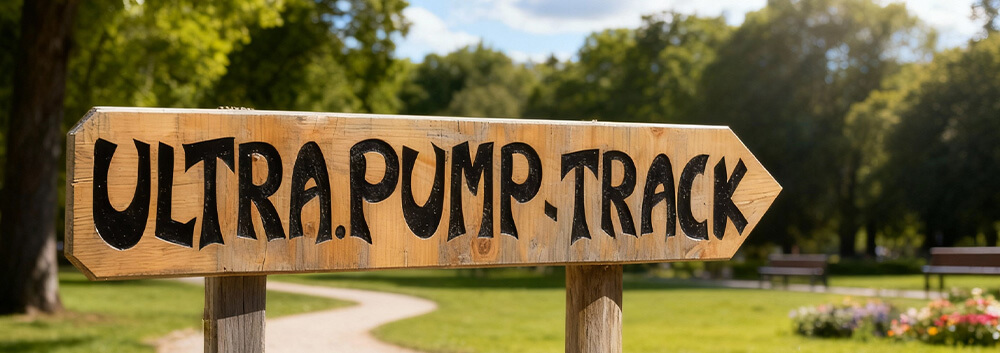What Is a Pump Track For?

Ever watched kids zoom around a park without pedaling, just using their body to keep going? That’s the magic of a pump track. These setups turn simple rides into exciting adventures. But what exactly is a pump track for? At its core, it’s a looped path with bumps and turns where riders build speed through body movements. No need for engines or constant pushing. It’s all about rhythm and flow.
Pump tracks started as dirt paths for bike racers. Over time, they’ve grown into spots for everyone – from toddlers on scooters to pros on skateboards. They build skills, boost fitness, and bring people together. Think of them as playgrounds on wheels. In this post, we’ll dive into their uses, benefits, and why they’re popping up everywhere. Whether you’re a parent looking for family fun or a community planner, understanding pump tracks can spark new ideas.
The Basics of Pump Tracks
A pump track is a circuit of rollers, berms, and jumps. Riders “pump” by shifting weight – pushing down on ups and pulling up on downs. This creates momentum. Simple, right? Yet it takes practice to master.
Kids love it because it’s forgiving. Fall off? Just hop back on. Adults find it addictive too. It’s low-impact exercise that feels like play. Pump tracks suit bikes, scooters, skateboards, and even inline skates. They’re versatile. In parks, they draw crowds. At home, they fit backyards.
Materials and Builds Over Time
Early pump tracks used dirt. Cheap and easy, but rain turns them to mud. Maintenance? A headache. Then came asphalt and concrete – tough, but pricey and fixed in place.
Wood showed up next. It works indoors or out, but weather wears it down fast. Slippery when wet. Now, plastic modules are gaining ground. They’re tough against sun and rain, quick to set up, and easy to move. Riders get good grip, no splinters.
Each material has its place. Dirt for budgets. Concrete for permanence. Modules for flexibility. Choose based on your spot and needs.
Who Uses Pump Tracks and Why

Pump tracks aren’t just for one group. They’re for anyone with wheels.
For Families and Kids
Picture a sunny afternoon. Your child grabs a bike, hits the track, and grins ear to ear. Pump tracks teach balance and coordination. No pedaling means less frustration for beginners. It’s safe – low speeds, soft falls.
Parents see it as a way to get kids outdoors. Away from screens. Building confidence. In neighborhoods, they become meeting spots. Friends race, laugh, share tips. It’s social play that strengthens bonds.
For Athletes and Skill Building
Serious riders use pump tracks to sharpen skills. BMX pros practice turns. Mountain bikers build endurance. Skateboarders hone tricks.
It’s like a gym without weights. Pumping works core muscles, improves timing. Pros say it boosts performance in races. Even casual athletes feel the burn. Short sessions add up to better fitness.
Communities host events here. Competitions draw crowds, build local pride. Clubs form around them. It’s more than exercise – it’s a path to personal growth.
Community and Business Angles
Towns add pump tracks to parks for good reason. They pull in visitors, liven up spaces. Resorts use them to stand out. Campgrounds add fun for guests.
Businesses see value too. Event planners rent portable ones for festivals. They create buzz, attract families. In urban areas, they turn empty lots into hubs. Boost foot traffic for nearby shops.
On a bigger scale, pump tracks promote health. Cities fight obesity with active spaces. They’re inclusive – all ages, abilities. Wheelchair adaptations even exist. It’s about making fun accessible.
Benefits That Go Beyond the Ride
Why bother with a pump track? The perks stack up.
- Health Wins: Riding burns calories, strengthens legs and core. It’s cardio without boredom. Fresh air helps mental health too.
- Skill Development: Learn control, timing, focus. Transfers to other sports. Builds resilience – try, fall, try again.
- Social Perks: Brings people together. Families bond. Strangers chat. Reduces isolation in busy worlds.
- Eco-Friendly: Low footprint. Modules reuse materials. No power needed. Green fun.
Costs vary. Basic setups start low. Long-term? They save on upkeep compared to traditional parks.
| Benefit Type | Examples | Why It Matters |
| Physical | Muscle build, heart health | Keeps you active daily |
| Mental | Stress relief, confidence | Feels good, builds pride |
| Social | Group rides, events | Strengthens community ties |
| Economic | Low maintenance, draws crowds | Smart investment for towns |
These aren’t just claims. Riders report more energy, better moods. Communities see happier folks.
Real-World Examples of Pump Tracks in Action

Look around – pump tracks show up in surprising places.
In campgrounds, they entertain guests between hikes. One spot in Canada added one, saw more families stay longer. Kids rode while parents relaxed.
Sports parks mix them with fields. A Hong Kong venue includes pump tracks with pickleball. Draws diverse crowds. Pros and amateurs share space.
Skateparks pair them well. A Belgian rider rents modules for events. Quick setup, big impact. Moves from city to city.
Backyards? A California doctor built one for his grandson. Turned playtime into races. Neighbors joined in.
Even harsh spots work. Saudi parks use them in heat. Tough builds handle extremes. Riders flock despite weather.
These stories show versatility. From urban plazas to remote resorts. Pump tracks adapt, deliver joy.
Challenges and How to Overcome Them
Not everything’s smooth. Weather hits dirt tracks hard. Modules solve that – rainproof, sturdy.
Space tight? Go small. Modules fit odd shapes.
Budget worries? Start basic, add later. No big approvals needed.
Safety first. Helmets, supervision. Good design prevents issues.
With planning, drawbacks fade. Focus on long-term fun.
Introducing ULTRAPUMPTRACK as a Pump Track
Supplier

If you’re thinking about adding a pump track, consider suppliers who know the game. ULTRAPUMPTRACK stands out as a go-to for modular pump tracks. They started as cycling fans building dirt paths, then shifted to plastic modules for better durability.
Their setups suit parks, backyards, events. Quick assembly, custom layouts. They handle harsh weather, offer warranties. From design help to shipping, they make it simple. Riders get safe, grippy surfaces. It’s about creating spots that last and thrill.
Wrapping It Up: Why Pump Tracks Matter
Pump tracks do more than entertain. They build skills, health, connections. From kids learning balance to communities gaining hubs, their impact runs deep. Easy to start, hard to quit. If you’re seeking fun on wheels, a pump track fits the bill. It turns ordinary spaces into adventure zones. Give one a try – you might get hooked.
FAQs on Pump Tracks
What is a pump track for beginners?
A pump track for beginners is all about learning basics without pressure. It helps new riders build confidence through simple body movements. Start slow, feel the flow.
Who can use a pump track for fun?
Anyone with wheels! A pump track for kids means safe play. For adults, it’s fitness and stress relief. Families bond over shared rides.
What’s the best material for a pump track for outdoors?
Plastic modules work great for outdoors. They’re tough against rain and sun. A pump track for all weather keeps the fun going year-round.
How does a pump track for communities help?
It draws people together. A pump track for events boosts local vibes. Towns see more activity, healthier folks.
Can I set up a pump track for my backyard?
Yes, modular ones fit small spaces. A pump track for home use adds daily excitement. Easy to expand as needed.

